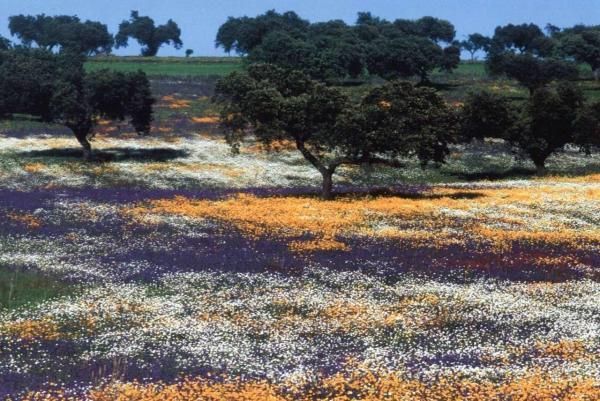Biodiversidad, Ecología y Evolución
Departamento

Victoria Elena
Meza Ochoa
Publicaciones en las que colabora con Victoria Elena Meza Ochoa (22)
2024
-
Correction to: Hotspots of biogeochemical activity linked to aridity and plant traits across global drylands (Nature Plants, (2024), 10, 5, (760-770), 10.1038/s41477-024-01670-7)
Nature Plants
-
Hotspots of biogeochemical activity linked to aridity and plant traits across global drylands
Nature Plants
-
Unforeseen plant phenotypic diversity in a dry and grazed world
Nature, Vol. 632, Núm. 8026, pp. 808-814
-
Vulnerability of mineral-associated soil organic carbon to climate across global drylands
Nature Climate Change, Vol. 14, Núm. 9, pp. 976-982
2023
-
Continuous monitoring of chlorophyll a fluorescence and microclimatic conditions reveals warming-induced physiological damage in biocrust-forming lichens
Plant and Soil, Vol. 482, Núm. 1-2, pp. 261-276
2022
-
Biocrust-forming lichens increase soil available phosphorus under simulated climate change
European Journal of Soil Science, Vol. 73, Núm. 4
-
Fourteen years of continuous soil moisture records from plant and biocrust-dominated microsites
Scientific Data
-
Grazing and ecosystem service delivery in global drylands
Science (New York, N.Y.), Vol. 378, Núm. 6622, pp. 915-920
-
The global distribution and environmental drivers of the soil antibiotic resistome
Microbiome, Vol. 10, Núm. 1
2021
-
Litter Decomposition Rates of Biocrust-Forming Lichens Are Similar to Those of Vascular Plants and Are Affected by Warming
Ecosystems, Vol. 24, Núm. 6, pp. 1531-1544
-
Species-specific effects of biocrust-forming lichens on soil properties under simulated climate change are driven by functional traits
New Phytologist, Vol. 230, Núm. 1, pp. 101-115
2018
-
Cascading effects from plants to soil microorganisms explain how plant species richness and simulated climate change affect soil multifunctionality
Global Change Biology, Vol. 24, Núm. 12, pp. 5642-5654
-
Early stage litter decomposition across biomes
Science of the Total Environment, Vol. 628-629, pp. 1369-1394
2016
-
Biocrust-forming mosses mitigate the negative impacts of increasing aridity on ecosystem multifunctionality in drylands
New Phytologist, Vol. 209, Núm. 4, pp. 1540-1552
-
Human impacts and aridity differentially alter soil N availability in drylands worldwide
Global Ecology and Biogeography, Vol. 25, Núm. 1, pp. 36-45
2014
-
Changes in biocrust cover drive carbon cycle responses to climate change in drylands
Global Change Biology, Vol. 20, Núm. 8, pp. 2697-2698
-
Climate and soil attributes determine plant species turnover in global drylands
Journal of Biogeography, Vol. 41, Núm. 12, pp. 2307-2319
-
Simulated climate change reduced the capacity of lichen-dominated biocrusts to act as carbon sinks in two semi-arid Mediterranean ecosystems
Biodiversity and Conservation, Vol. 23, Núm. 7, pp. 1787-1807
2013
-
Aridity Modulates N Availability in Arid and Semiarid Mediterranean Grasslands
PLoS ONE, Vol. 8, Núm. 4
-
Changes in biocrust cover drive carbon cycle responses to climate change in drylands
Global Change Biology, Vol. 19, Núm. 12, pp. 3835-3847
